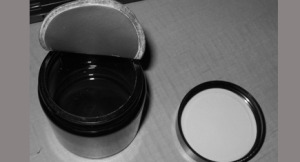Cap Liners
Often found yet still rarely realized, inside of many high quality container caps is a material that was placed into the cap prior to the cap being applied on the container or jar.
Sometimes, the end user discover this material.They ask themselves what is the goal of that seal and just how was it put in place? To the astonishment of many, that security seal or freshness seal was put in place with the aid of the cap or lid itself.
Single Piece and two Piece Cap Liners
Individual Piece Cap Liners
Several bottled goods are smaller packs where their contents are required being consumed or used as soon as they are opened. The buyer is not

anticipated to reclose this product or keep product within the container and this kind of product packaging is referred to as one time use packaging. The expected purpose of the lining material or sealing material, in such cases, would be to provide tamper evidence as a protection up until it is opened up. Induction sealing is realized with the aid of single piece materials welded to the peak rim of the jar. Any time you open up a product like this you will observe the aluminium foil across the top of the bottle and when you look into the cap or lid there will not be any other material left from the cap.
2 Piece Cap Liners
Other bottled products and bigger packs usually are not likely to be totally consumed once they are opened. The end user of the product is quite likely going to reclose and store the bottle or container, and thus there is a requirement for a cap the reseals effectively.
As soon as the induction seal has been taken away, there really should still be a material that could result in “friction seal” after the package is closed again. Normally, this is achieved with compressible laminated foam that is around 1 to 2 mm thick.
The soft quality of the foam permit compression as the cap or lid is tightened on the bottle or container. This offers the sort of friction fit tightness which can be kept regardless if the cap or lid is not screwed to its highest possible pressure. Although it is not as effective as a heat induction welded foil, the foam cap inserts supply a resealable seal, permitting the cap or lid can be removed and then replaced and tightened to create a high integrity seal.
Larger sized juice bottles frequently have both a foil lining material and a independent foam lining material. Freshness assurance is justified by the foil while the foam liner provide the resealable capability. For the duration of heat sealing process, the foam element ensures even contact of the foil layer.
When the bottle caps turn loosened while transporting or expand and contract due to temperature or perhaps failed to properly apply, in any case the merchandise integrity and packaging is damaged. With the application of the foil seal on the top of the container, spillage and spoilage are a uncommon occurrence regardless if the caps become loose.



